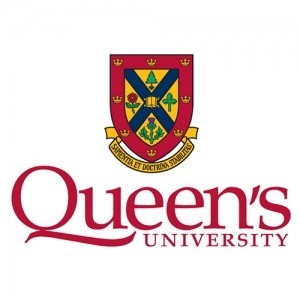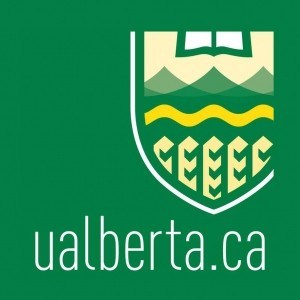Photos of university / #queensuniversity
Art History at Queen's University offers a comprehensive and engaging exploration of the visual arts across different periods and cultures. This program aims to develop students' skills in visual analysis, critical thinking, and understanding of the cultural and historical contexts of art. Students will study a diverse range of artworks, from ancient civilizations to contemporary practices, gaining insights into their significance and influence. The curriculum combines theoretical knowledge with practical analysis, encouraging students to engage with art through exhibitions, research projects, and discussions. Faculty members are experienced scholars dedicated to mentoring students and fostering a stimulating academic environment. The program provides opportunities for interdisciplinary learning, linking art history with archaeology, theory, and even museum studies. Graduates of the program are well-prepared for careers in museums, galleries, art conservation, education, publishing, and further academic research. The curriculum is designed to build critical skills, cultural awareness, and an appreciation for global artistic traditions. Students can pursue both a Bachelor of Arts degree with a major or minor in Art History, enabling flexibility to combine their interests. The program emphasizes hands-on learning through visits to local museums and archives, as well as participation in academic conferences and internships. By the end of the program, students will have developed a nuanced understanding of art's role in society, capable of analyzing and contextualizing visual culture with confidence. The faculty's commitment to research excellence ensures that students are exposed to the latest developments and debates in the field of art history. With a supportive academic community and access to valuable resources, students are equipped to pursue their passions and make meaningful contributions to the understanding of art in society.
Year 1
- 3 half courses at the 800-level (2 in one term, 1 in the other)
- Pass any needed language requirements
- Establish topics for the comps by the end of the Winter term
- Study for comps over the summer
Year 2
- Prepare comps essays in the fall
- In the Fall term or in January - comprehensive examinations
- Winter term - preparation of the thesis proposal, submitted and approved by the end of the term (before May 1st)
- Summer - begin dissertation research/ prepare for traveling to do on-site research
Year 3
- Dissertation research, begin writing, often on-site
Year 4
- Finish writing and defend the thesis
Requirements
- For admission to the Ph.D. program, an Honours B.A., or its equivalent, and an M.A. with an "A" grade in the primary courses, are required. Normally, both previous degrees should be in Art History; however, the committee will also consider degrees in a related subject (such as Art Conservation, Classics, Cultural Studies, Film, Fine Art, History, Literary Studies, etc.). In all cases, the Art History Graduate Committee will examine the record of courses taken by applicants in both their graduate and undergraduate programs in order to establish that they have sufficient preparation in the History of Art
- Proof of reading knowledge of one language other than English, normally in the form of a test passed at the M.A. level is required at the time of application.
- A writing sample (e.g. art history essay), submitted online.
- A current CV must be sent as electronic copy directly to the Graduate Assistant.
- A brief "Statement of Purpose" (500-600 words), outlining the applicants specific area(s) of research and career goals, this should include a statement of why they believe the Department of Art at Queen's is an appropriate place for their doctoral studies. This must be submitted as part of the online application.
- For international students, if required, a TOEFL total score of at least 600 (paperbased) or TOEFL iBT minimum scores of: writing (24/30); speaking (22/30); reading (22/30); listening (20/30), for a total of 88/120. Applicants must have the minimum score in each test as well as the minimum overall score.
- Two current academic letters of reference from scholars familiar with the candidates academic record and performance, must be sent either electronically through the online application process or alternatively as hard copy to the Graduate Assistant.
- All official academic transcripts must be sent to the attention of theGraduate Assistant.
Scholarships
- The School of Graduate Studies and Research at Queen’s University offers doctoral students four years of guaranteed funding ($18, 000 per year in 2011-2012).
- The funding package may be comprised of Queen's Graduate Awards, teaching assistantships, or named internal fellowships, which are awarded by the department on a competitive basis.
- Upper-year PhD students may be awarded a teaching fellowship. Employment as teaching assistants helps to familiarize students with the skills and duties of a teaching career; teaching fellowships, competitively awarded usually after completion of the Comprehensive Field Essays, allow students to design and teach their own course.
- Students are urged to seek outside funding, and students with at least an 80% overall average must apply for OGS and SSHRC awards in order to qualify for Queen's funding after their first year.
- Several Bader Fellowships (up to $30,000) for doctoral research in Europe may be awarded annually to students who have completed course work and language requirements, successfully passed the Comprehensive Field Essays and had their Doctoral Thesis Proposals approved. The amount of the Fellowship is $22,000 for students holding external awards (OGS or SSHRCC), and $30,000 for students without external support
The Bachelor of Arts in Art History at Queen's University offers students an extensive exploration of the visual arts from diverse historical periods and geographical regions. The program emphasizes critical analysis, historical context, and theoretical understanding of works of art, enabling students to develop a comprehensive appreciation of visual culture. Students enrolled in this program have the opportunity to study a wide array of topics, including ancient art, medieval art, Renaissance and Baroque periods, modern and contemporary art, as well as non-Western artistic traditions. The curriculum combines lectures, seminars, and hands-on experiences such as visits to local museums and galleries, fostering both theoretical knowledge and practical skills in art research, connoisseurship, and curatorial practices.
Queens University’s Art History program also encourages interdisciplinary approaches, integrating perspectives from history, archaeology, and cultural studies to enrich students’ understanding of art within its broader societal and cultural contexts. The program is designed to prepare graduates for careers in museums, galleries, cultural organizations, education, arts administration, and further academic study. Students benefit from the university’s supportive faculty, many of whom are recognized scholars and researchers in their fields, offering mentorship and guidance throughout their academic journey. The program includes opportunities for internships and research projects, allowing students to gain real-world experience and develop professional networks.
Furthermore, Queen’s University provides access to extraordinary facilities, including the Agnes Etherington Art Centre, which houses an important collection of artworks and serves as a living classroom for students. The program’s flexible structure allows students to tailor their studies according to their interests, with options to deepen knowledge through specialized courses in areas such as Asian art, African art, or contemporary visual culture. Upon graduation, students are well-equipped with analytical, research, and communication skills that are highly valued in the arts and cultural sectors. The Art History program at Queen's University remains committed to fostering a vibrant academic community dedicated to the appreciation and understanding of art in its multiple facets across history and cultures.




